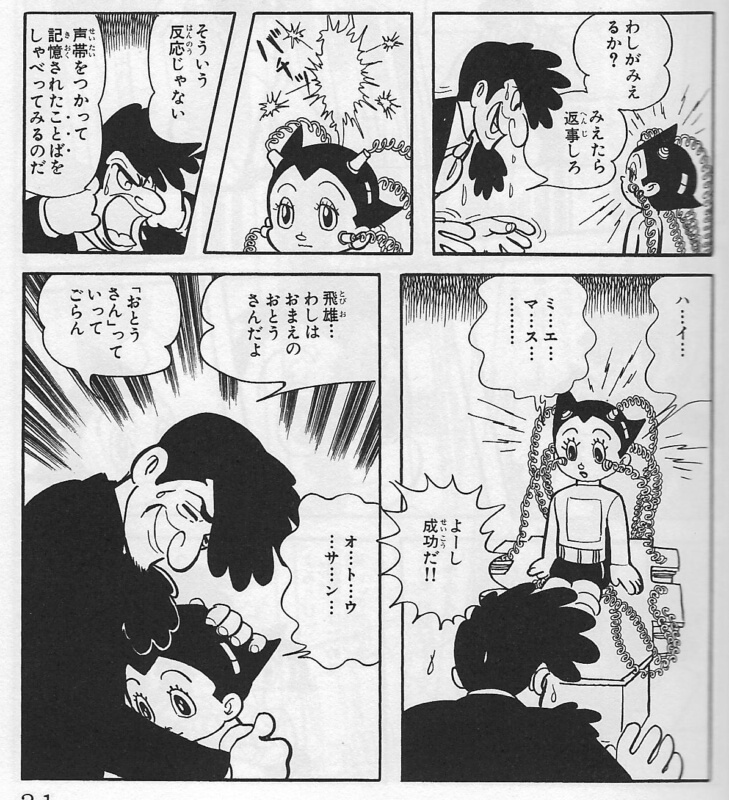 Astro Boy,” the new American computer-animated version of the Japanese comic and cartoon that launched the revolution we now call anime, opens today.
Astro Boy,” the new American computer-animated version of the Japanese comic and cartoon that launched the revolution we now call anime, opens today.
I’m more than a little nervous about seeing the movie, since it may not resemble the Japanese cartoon I grew up with, and because Hollywood really screwed up “Speed Racer” when they decided to turn that classic anime into a big live-action spectacle.
(The following text is a re-worked version of a pre-blog Nikkei View column I wrote back in 2003.)
Astro Boy, called “Tetsuwan Atomu” in Japan, was originally introduced in 1952, as a manga, or comic book character, and later turned into an animated television series. Created by the pioneering Japanese comic and anime (animation) artist Osamu Tezuka, his name stands for “The Mighty Atom,” an image still vivid in the minds of millions of Japanese who had lived through the end of World War II just seven years before, and the atomic bombings of Hiroshima and Nagasaki.
The cartoon character is best-known in the US for the English-dubbed versions of the “Astro Boy” series that first aired in 1963 and then was re-launched with a new series in 1982 and resurrected in a computer-animated film opening today, featuring the voices of Freddie Highmore, Nicolas Cage, Kristen Bell, Bill Nighy and Samuel L. Jackson.
The story line is a spin on Pinocchio and superhero comics, mixed with a dose of Steven Spielberg’s film “A.I.” (actually “A.I.” borrows more than a dose from Astro Boy). When the kindhearted Dr. Boynton’s (Professor Tenna in the Japanese original) son is killed in a car accident, he invents an atomic-powered robotic replacement only to discover that there’s no way that the android can truly be human. The mechanical boy was born on April 7, 2003 — the far future — in the original manga. Continue reading




 Surfing
Surfing  Although I covered pop music at a time when punk, hardcore, “alternative” rock, rap and hip hop were the coolest sounds, I always had a soft spot for the sweet sugar of pure pop. I once wrote an essay comparing Michael Jackson to Prince, as if Jackson were the Beatles and Prince were the Rolling Stones. In my essay, MJ won out (but this was before MJ got weird).
Although I covered pop music at a time when punk, hardcore, “alternative” rock, rap and hip hop were the coolest sounds, I always had a soft spot for the sweet sugar of pure pop. I once wrote an essay comparing Michael Jackson to Prince, as if Jackson were the Beatles and Prince were the Rolling Stones. In my essay, MJ won out (but this was before MJ got weird).  Betty James just passed away. Who’s that, you say?
Betty James just passed away. Who’s that, you say? 






